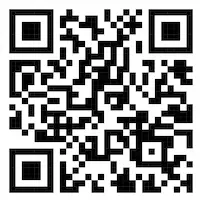
Here we are at the deepest level of beliefs.
Our core beliefs are fundamental, enduring, and often unconscious perceptions about ourselves, the world, and other people.
They are formed in early childhood and significantly influence our behavior and emotional reactions, often beyond our conscious control.
These beliefs are like invisible tracks guiding the train of our lives. Healthy core beliefs foster positive experiences, while unhealthy ones often lead to problems and suffering.
Keep in mind: although we have clearly distinguished between the three categories of beliefs, in reality, they often overlap.
For example, the formulation of a core belief may even appear in automatic thoughts.
To understand how this works, let's consider an example of Alexander:
“I am unworthy of love” and “People cannot be trusted”
“If I take the initiative, I will be rejected”, “Any intimacy is a threat”, “It’s better to avoid relationships to avoid pain”
“She is looking for someone better”, “She will leave me”, “She is deceiving me”, “She cannot be trusted”
More content in our app
You're only seeing a portion of the content. In the app, you'll find numerous interactive articles. Additionally, there are psychological tests to track your mood dynamics, a daily planner, an automatic thought journal, and much more!

This way of thinking affects his behavior—he becomes jealous and suspicious, tries to control his girlfriend, acts insecure, and avoids taking the initiative.
As a result, he pushes her away himself, reinforcing his core belief that he is unworthy of love and that people cannot be trusted.
The founder of cognitive-behavioral therapy, Aaron Beck, identified two categories of core beliefs, and later, his daughter, Judith Beck, added a third.
It is important to understand that these categories can intertwine. For example, a sense of worthlessness can reinforce helplessness: “I am incapable because I am worthless.”
Likewise, unacceptability can lead to a sense of helplessness: “I cannot change how people treat me.”
Let’s explore the three categories of core beliefs and examples of their formulations.
This category reflects the belief in one's inability to control life and cope with difficulties. A person feels weak, fragile, and dependent on others.
About oneself: “I am weak”, “I am incapable”, “I am a failure”, “I cannot cope”, “I am dependent.”
About others: “Other people are stronger than me”, “Others are dangerous”, “They criticize me”, “They control me.”
About the world: “The world is complicated and hostile”, “The world is dangerous”, “It is impossible to succeed in this world”, “Life is cruel and unfair.”
This category includes beliefs about one’s own unattractiveness, lack of love, and failure to meet social norms. The person fears rejection and expects judgment from others.
About oneself: “I am antisocial”, “I am unattractive”, “I am unlovable”, “I am different from others”, “I am unworthy of love.”
About others: “People are demanding”, “People are cruel”, “People will reject me”, “People judge me.”
About the world: “The world rejects me”, “The world devalues me”, “The world has unrealistic expectations”, “The world is cruel and indifferent to me.”
This category includes beliefs about one's own inferiority and inadequacy. A person feels worse than others, unworthy of attention and respect.
About oneself: “I am worthless”, “I am a failure”, “I am stupid”, “I am useless.”
About others: “Others are better than me”, “Others despise me”, “They look down on me”, “They are more successful than me.”
About the world: “The world is cruel and unfair”, “The world is demanding and ruthless”, “The world does not value me”, “The world punishes me.”
Where to Start When Working with Beliefs?
When working on one’s thinking, there may be a temptation to immediately address core beliefs—the root of the problem. The logic seems obvious: if you eliminate the cause, the effect will disappear. However, this approach is ineffective.
It is important to start at a more accessible level—automatic thoughts. These are surface-level, spontaneous reactions to events that are easier to identify and change.
Developing appropriate alternative responses to automatic thoughts is a crucial preparatory step. It lays the foundation for further work with intermediate beliefs and, finally, with core beliefs.








